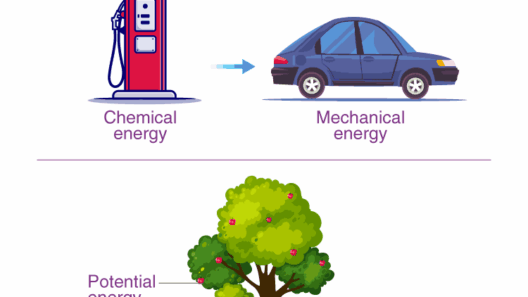The conversion of light energy into chemical energy is a profound step in the realm of photosynthesis. At the heart of this process are two pivotal molecules: adenosine triphosphate (ATP) and nicotinamide adenine dinucleotide phosphate (NADPH). These molecules serve as essential bioenergetic currencies, driving various metabolic processes in plants and, by extension, supporting life on Earth. Understanding how light energy is conserved in ATP and NADPH unfurls the intricate workings of photosynthetic machinery and emphasizes the ecological significance of these processes.
Photosynthesis primarily occurs in the chloroplasts of plant cells, where light energy from the sun is harnessed. This process is bifurcated into two stages: the light-dependent reactions and the light-independent reactions, also known as the Calvin Cycle. The former is paramount in converting solar energy into chemical forms. This article will delve into the operational dynamics of light energy conservation within ATP and NADPH during the light-dependent reactions.
Initially, let’s explore the structure of chlorophyll, the green pigment that captures light. Chlorophyll’s ability to absorb light, particularly in the blue and red wavelengths, is pivotal in converting light energy. When chlorophyll absorbs photons, its electrons are excited to a higher energy state, initiating a series of events that lead to ATP and NADPH synthesis. The excitation of electrons can be likened to a chain reaction, propelling essential biochemical processes.
The light-dependent reactions take place in the thylakoid membranes of chloroplasts. These membranes harbor protein complexes known as Photosystem II (PSII) and Photosystem I (PSI). Photons absorbed by PSII initiate the photolytic cleavage of water molecules in a process called photolysis, releasing oxygen as a by-product. This reaction is significant, as it not only liberates oxygen into the atmosphere but also produces protons and electrons, the latter being vital for subsequent energy transformations.
Following photolysis, the energized electrons are transferred through an electron transport chain (ETC). The ETC comprises a series of proteins that facilitate the movement of electrons from PSII to PSI. As electrons traverse this chain, they release energy which is utilized to pump protons from the stroma into the thylakoid lumen, creating a proton gradient. The accumulation of protons generates a chemiosmotic potential, a critical force utilized in ATP synthesis.
The process of ATP generation is achieved via a protein complex known as ATP synthase. Protons flow back to the stroma through ATP synthase, harnessing the gradient established earlier. The mechanical energy derived from this flow drives the phosphorylation of adenosine diphosphate (ADP) to form ATP. This splendid method of energy production is called photophosphorylation and is emblematic of energy conservation in biological systems.
Simultaneously, the energized electrons continue to PSI, where they replenish the electron deficit of the pigment molecules. When PSI absorbs light energy, it further excites these electrons. The ultimate destination for these high-energy electrons is the formation of NADPH. The reduction of NADP+ to NADPH occurs as electrons are transferred from PSI through a secondary electron transport chain, involving an enzyme called ferredoxin-NADP+ reductase. This mechanism, too, illustrates the conservation of light energy in the form of chemical bonds.
In summation, ATP and NADPH synthesized during the light-dependent reactions serve as integral carriers of energy and reducing power, respectively. While ATP provides the requisite energy for various cellular processes, NADPH acts as a reducing agent, facilitating the conversion of carbon dioxide into glucose during the Calvin Cycle.
Moreover, the conservation of light energy into ATP and NADPH is not limited to terrestrial plants. Algae and cyanobacteria also employ similar mechanisms for energy transformation. This universality underscores the fundamental nature of photosynthesis in sustaining life across diverse ecosystems. Each ATP and NADPH molecule generated through this process contributes to the vast web of life, fueling not only plant growth but also supporting herbivores, carnivores, and ultimately, human societies.
Understanding the biochemical powerhouses of ATP and NADPH in the context of light energy conservation invites a broader perspective on ecological sustainability. In an era characterized by climate change and increasing environmental degradation, acknowledging the role of photosynthesis in carbon fixation and oxygen production highlights the need to protect our plant life. Protecting forests and wetland ecosystems ensures that the mechanisms of light energy conservation continue unimpeded, contributing to a balanced atmosphere and sustainable environments.
In conclusion, the intricate process of conserving light energy into ATP and NADPH epitomizes the elegance of nature’s biochemical strategies. As the world grapples with climatic challenges, acknowledging the significance of these biochemical powerhouses is crucial. The ability of living organisms to harness solar energy and convert it into usable forms directly impacts ecological health and the sustainability of life on our planet. Understanding and respecting these processes may become imperative in our efforts to mitigate the effects of climate change and promote a resilient biosphere for future generations.








